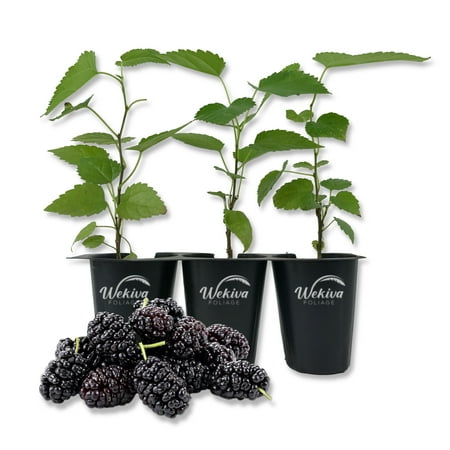How to grow mulberry trees in pots – to transform small spaces with this beautiful and delicious fruiting plant
Growing fruiting trees in pots is a great way to boost your harvests in compact yards

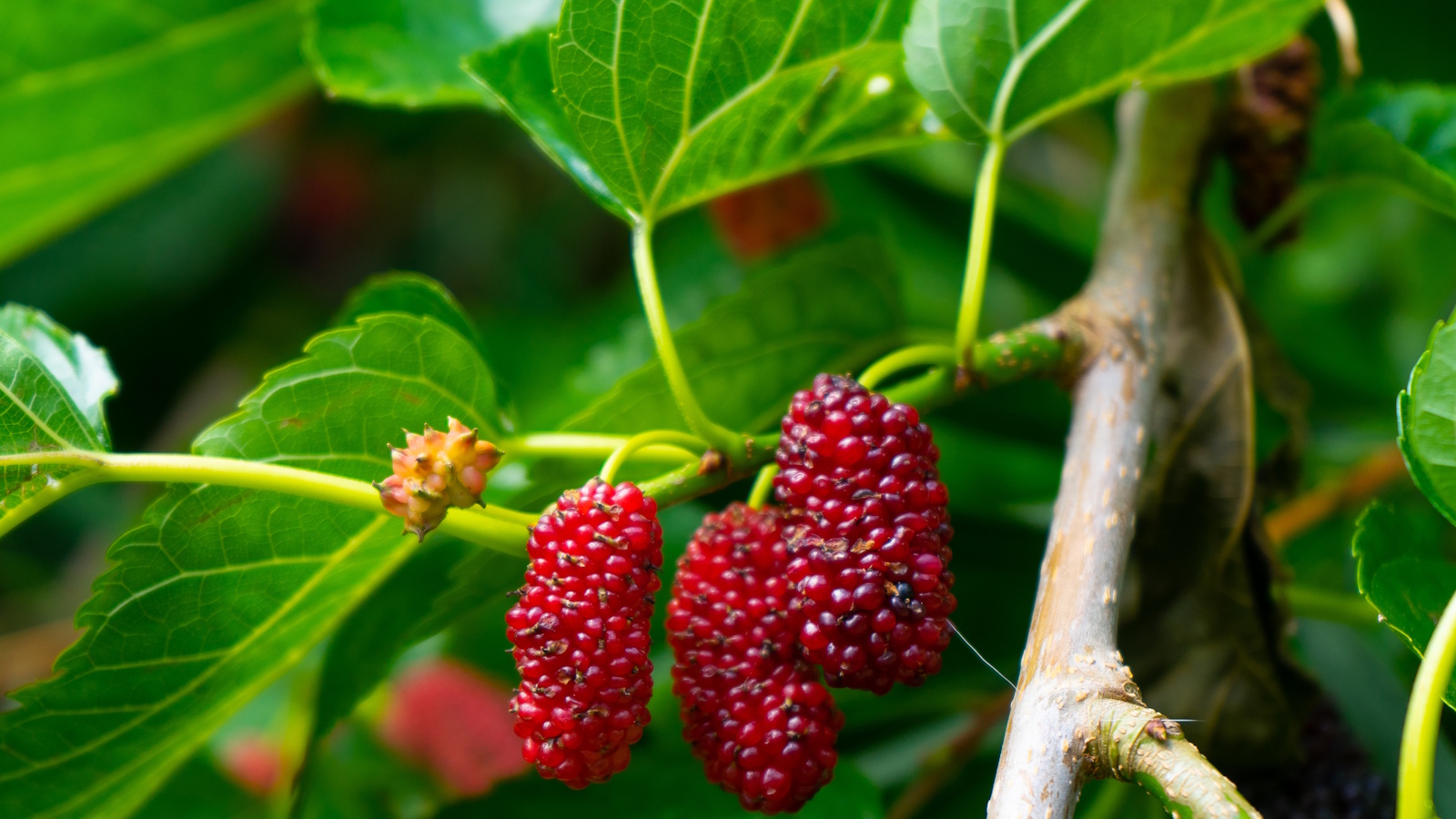
Many gardeners with small yards might think that growing mulberries is not possible in confined or compact spaces. While it is true that they can grow to impressive sizes when planted in the ground - the native red mulberry, Morus rubra, for example, can reach upwards of 50 feet - there are many smaller varieties of mulberry trees that are well suited to container culture.
Not only do mulberry trees produce fruits in the summertime, they tend to have heart-shaped foliage along with a gnarled bark that I think only improves with age. And, if you need any more encouragement, the deciduous foliage can also turn vibrant shades of orange and yellow come fall, adding seasonal interest to any plot.
So, if you want to add some height and structure to your pot displays this year, consider learning how to grow a mulberry tree in a container. Here, one garden expert reveals all you need to know to produce fruits in the smallest of spaces.
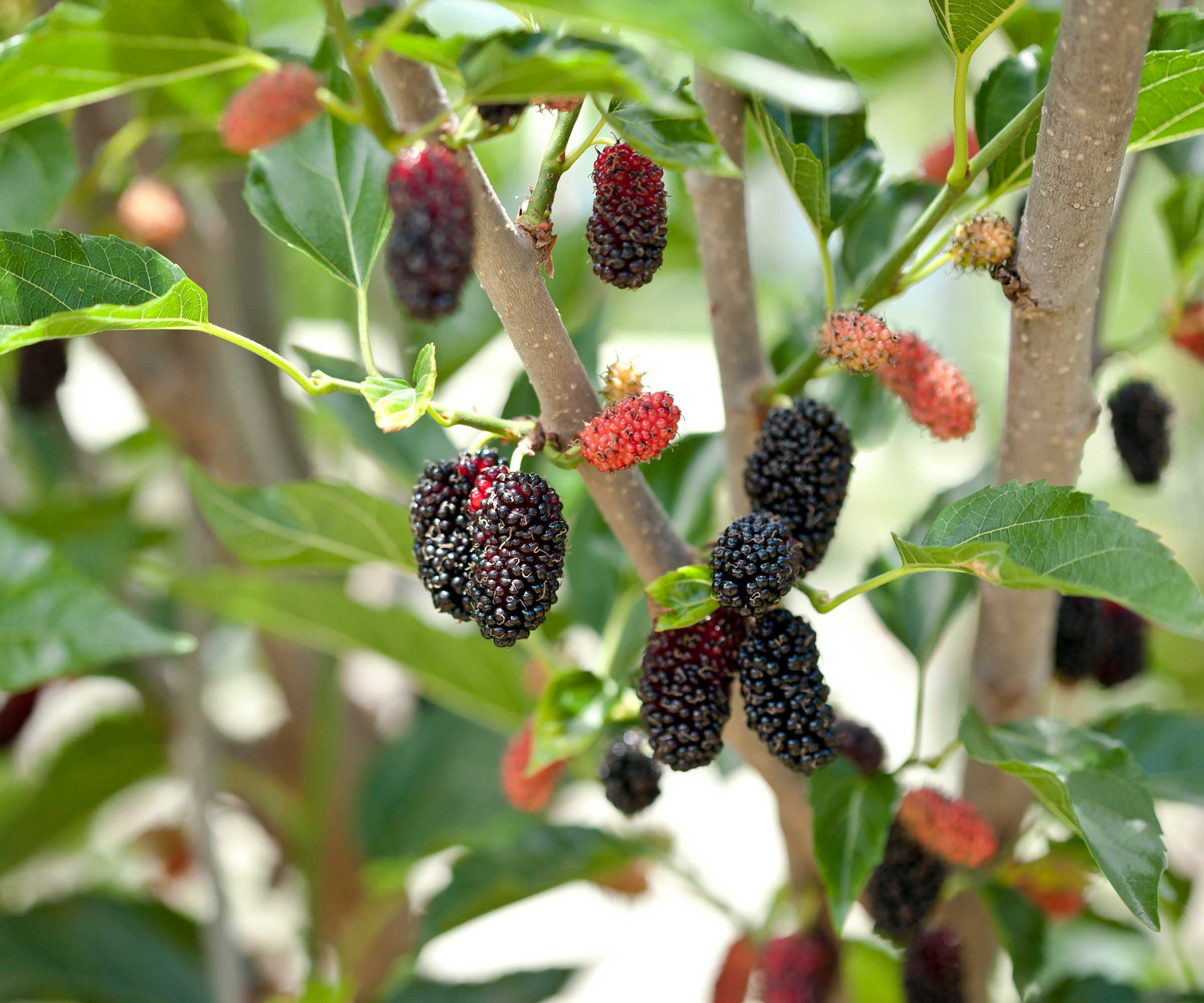
How to grow mulberry trees in pots
Mulberries are unusual fruit trees that can be grown in a variety of settings. While it will vary between different species, most can be grown from US hardiness zone 4 to US hardiness zone 9, with a preference for sunny and sheltered positions.
Growing advice for mulberry trees in pots
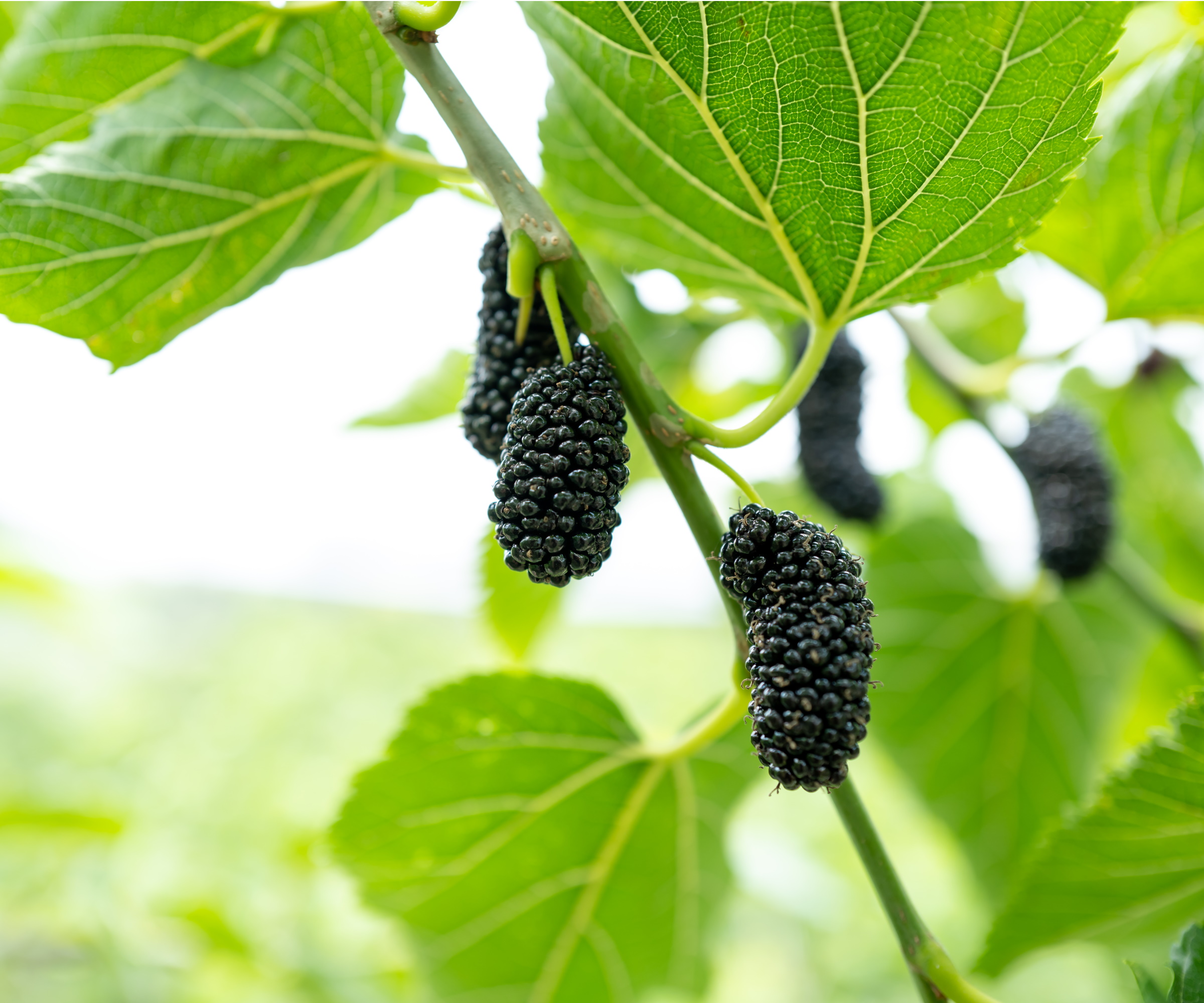
'Mulberry trees might not be the first species that comes to mind when thinking about the best fruit trees for small gardens and containers, but they can be successfully grown in pots,' says plant expert, Katie Sunderlage, based in Wisconsin. Dwarf everbearing live mulberry trees are available from Amazon.
Choose a large pot, ideally one that is a minimum of 12 to 20 inches wide, although you might need to use something even larger for a more established specimen. Position your pot in a sheltered, sunny corner where the tree will enjoy at least six hours of sunshine. Remember that the more sunshine your plant enjoys, the more flowers and fruit it will produce. When you are happy with the location, use one to two inches with horticultural grit or perlite to improve drainage. Perlite is available from Walmart.
'Next, fill the pot using an all-purpose potting soil,' Katie says. 'It is best to add organic matter or compost as well to help with aeration and nutrient needs. I find that sticking to a ratio of 2/3 soil to 1/3 compost or organic matter will produce the best results.
Design expertise in your inbox – from inspiring decorating ideas and beautiful celebrity homes to practical gardening advice and shopping round-ups.
'When using pots, soil nutrients can be lost very quickly during the active growing season,' Katie says. 'Using an all-purpose balanced fertilizer every three weeks in spring and summer is recommended. Be sure the fertilizer chosen is safe to use on fruit trees and follow the instructions on the label to ensure they are not being overfed. You can stop feeding usually around August or September, and begin again from March or April.'
For an easy option, try this slow-release fertilizer, available from Perfect Plants, which will gradually release nutrients into the soil over the growing season.
'Also, remember that deep watering is important,' Katie adds, 'especially in southerly and mild locations. This should be done once or twice a week for optimal fruit production.'

Operations Manager at Holland Group, managing the customer service department and purchasing. Katie has been in the green industry since 2005 in the Greater Milwaukee area, earning her degree in Horticulture in 2008. She has been able to share her love for plants working in multiple garden centers, in sales positions and most recently in an online retail platform at Holland Group.
Best mulberry tree varieties to grow in pots
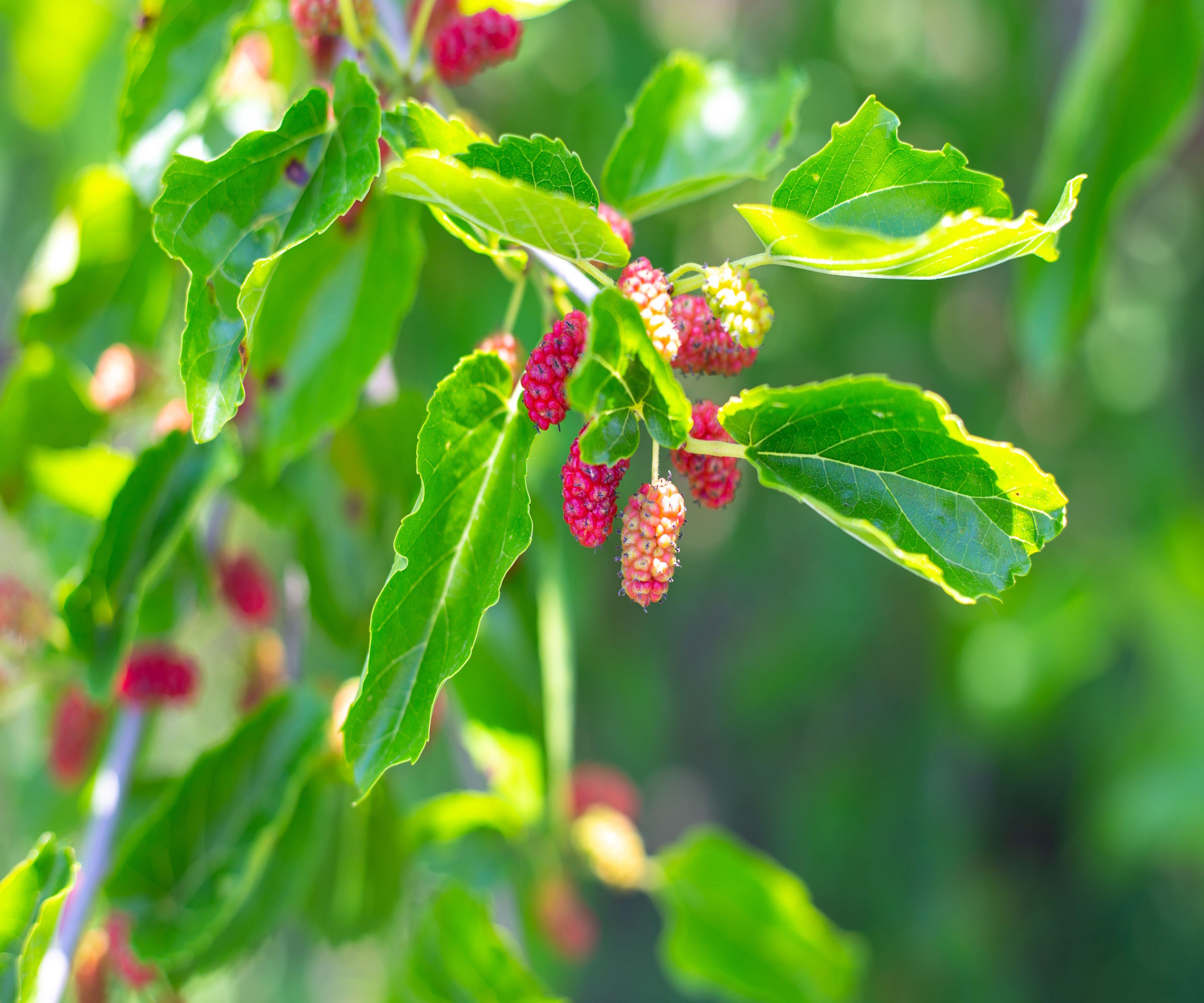
'For the best chances of success, choose a dwarf variety,' Katie says. 'There are many smaller options, such as 'Gerardi Dwarf', 'Matsunaga' or 'Mojo Berry', all of which are ideal for container culture.
'Most varieties are hardy down to zone 5 or even zone 4, but remember that pots are more susceptible to freezing in the winter and will need protecting.'
As Katie suggests, opting for a dwarf tree is a good idea when growing in pots. The Morus alba x rubra 'Gerardi Dwarf' variety should grow no more than six to eight feet and is highly valued for its fruit production. This variety was originally cultivated by nursery growers in Illinois, and so might be a good option for North American gardeners.
If you need any advice on dwarf options for your region, consult your local nursery who should be able to advise.
FAQs
Do I need to winterize mulberry trees in pots?
'In terms of protecting mulberry trees in winter, while those in zone 9 or 10 would be fine, in cooler regions, it is a good idea to move the pot to a protected area out of cold winds,' Katie says. 'Close to a house or building is best. You can also add a layer of insulation around the pot to keep the roots from freezing, using a blanket or some straw bales to add some extra insulation to pots. Finally, I suggest tying your pots down to ensure they do not topple over in the wind.'
Mulberry trees can be slow to establish and may take five or more years to produce fruit. For this reason, patience is needed if you decide to grow a mulberry variety in a pot, but the delicious fruits will certainly be worth the wait.
For more small garden inspiration, see our guide on how to grow blueberries in pots, which is another good, hardy option for those gardeners with compact spaces.

Thomas is a Content Editor within the Gardens Team at Homes and Gardens. He has worked as a professional gardener for both public spaces and private estates, specializing in productive gardening, growing food and flowers. Trained in Horticulture at the Garden Museum, he has written on gardening and garden history for various publications, including The English Garden, Gardens Illustrated, Hortus, The London Gardener and Bloom. He has co-authored a Lonely Planet travel book, The Tree Atlas, due out in 2024.
